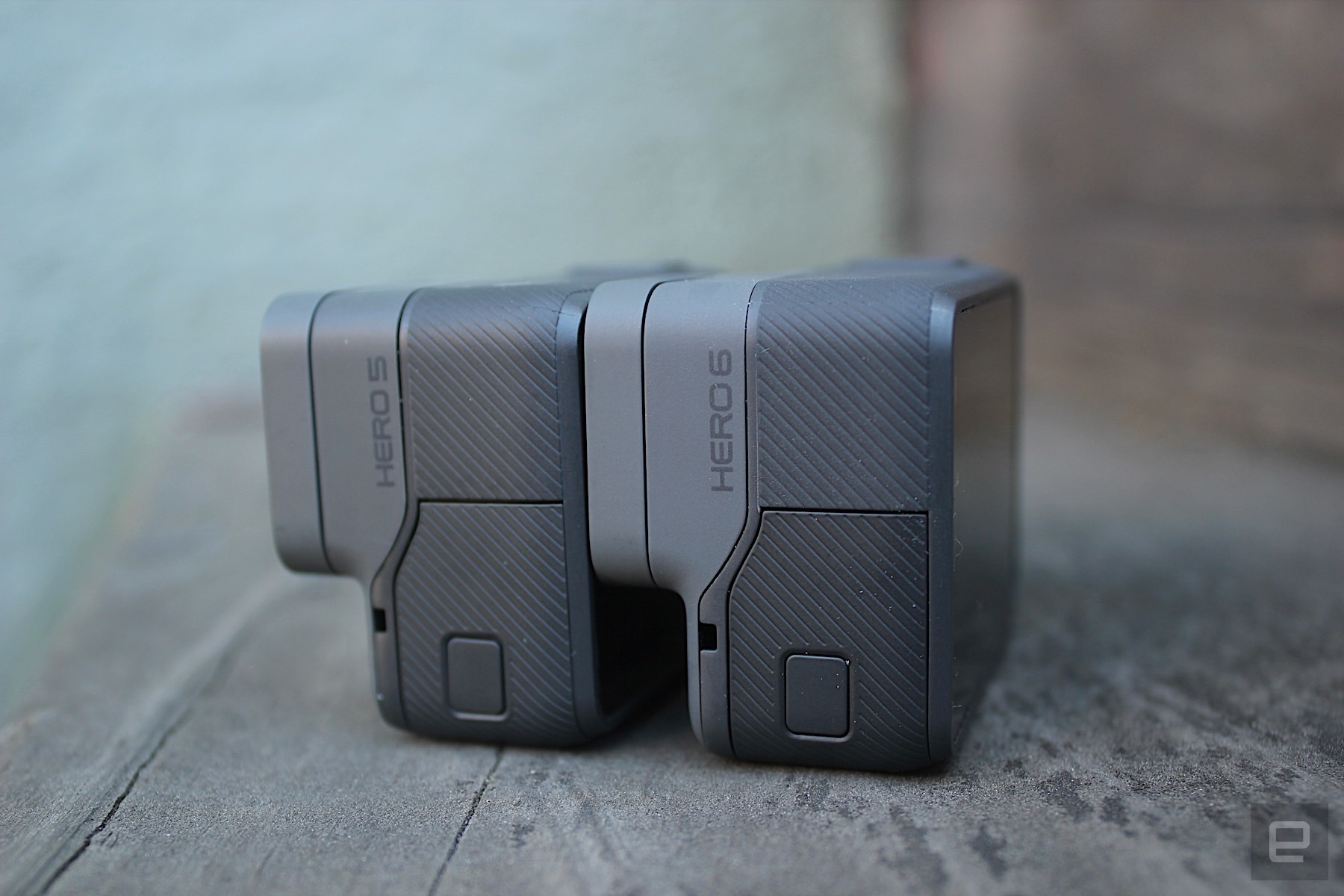When GoPro hosts an event in the fall, you get no prizes for guessing what’s coming. Company CEO, Nick Woodman, just revealed the Hero 6 here in San Francisco, to no one’s surprise. What is surprising (if you ignored the leaks) is that the new camera has one big, largely invisible, change: the image processor (which GoPro is calling the “GP1”). We’ll get to why that’s important in a bit.
For now, you probably want to know what the Hero 6 does that, say, the Hero 5 can’t. The most obvious upgrade seems to be the slo-mo frame rates, which have largely been doubled across the board. That means you can shoot 4K at 60 frames per second, 2.7K at 120 and 1080p now goes all the way up to 240 FPS. The electronic image stabilization — a feature introduced on the Hero 5 — is also much improved (it’s now six, rather than four axes), though still no OIS, yet.
Other improvements include faster WiFi speeds for file transfer, linear (not incremental) zoom and an all-new HDR mode (replacing WDR in the Hero 5). As expected, the camera will sell for $499 starting today — that’s $100 more than the Hero5 cost when it launched a year ago.

While spec lovers might see the near-identical design of the Hero 5 and think this as something of an incremental update, the introduction of GoPro’s own “GP1” image sensor is big news. Right now, the main impact is that it pulls GoPro out of the (increasingly busy) pool of action cameras that rely on Ambarella imaging chips (basically, the Intel or ARM of action/drone cameras). GP1 gives GoPro a chance to differentiate itself, and the first way it’s doing that is with image quality. GoPro claims GP1 offers improved dynamic range, extensive manual controls, enhanced color reproduction and better lowlight performance, according to Woodman.
GoPro worked with Socionext (a company with DNA from Fujitsu and Panasonic) to build the GP1 chip to the company’s specifications, rather than trying to wrangle the best image it could out of the off-the-shelf Ambarella options. We don’t have specific details yet as to what optimization GoPro has done, so we’ll need to spend some time with the camera to see for ourselves the difference it makes.
For those holding out on the Hero 5, you might indeed be disappointed to see that the Hero 6 costs $100 more than last year’s model. Let’s just hope the Hero 6 delivers on its promise.
